The animal world is full of surprises, and one common curiosity that often sparks interest is the question, “What animal can’t look up?” The answer to this quirky question is pigs! It’s an intriguing fact that pigs, despite their intelligence and adaptability, have a unique physical limitation: they are unable to lift their heads and look directly upwards.
In this article, we’ll dive deep into the anatomical reasons why pigs can’t look up, explore some common myths around this fact, and take a broader look at pigs’ behavior and physical characteristics. By the end, you'll have a better understanding of these fascinating creatures and the reasons behind their peculiar restriction.
The main reason pigs can’t look up has to do with their anatomy, specifically the structure of their necks and spinal vertebrae. Pigs have relatively short, muscular necks designed to support their heads for rooting and foraging activities on the ground, rather than for looking upwards.
Here’s a breakdown of the key factors:
Limited Neck Mobility: Pigs have stiff neck muscles and a compact spinal structure that limit the upward movement of their heads. While they can move their heads from side to side and look downwards with ease, tilting their heads back to gaze at the sky is a challenge.
Snout-First Design: Pigs are natural foragers, meaning their anatomy is optimized for snuffling and rooting in the soil with their snouts. Their low-slung heads, along with powerful snouts, help them dig for food like roots, insects, and other ground-level treats. This evolutionary adaptation reduces the need for pigs to look upwards.
Field of Vision: Pigs also have eyes positioned on the sides of their heads, giving them a wide field of view. While this helps them detect predators or food at ground level, it further limits their ability to see directly above.
Despite this limitation, pigs can still look at higher objects in certain ways. They can slightly raise their heads or tilt them, though not enough to look straight up at the sky. This anatomical quirk is one of the many factors that make pigs such unique creatures.

A common myth is that pigs never get to see the sky. While it’s true that pigs can’t easily look straight up, they aren’t completely deprived of seeing the sky. Pigs can roll onto their sides or backs when they’re resting or playing, which allows them to get a glimpse of the world above. So, while they can’t actively lift their heads to look up like humans or some other animals, they’re not entirely incapable of seeing what’s going on above them.
While pigs’ inability to look up is an interesting fact, there are many more fascinating aspects to their behavior and physicality:
Highly Intelligent Animals: Pigs are known for their intelligence and are often ranked among the smartest animals in the world. They can learn complex tasks, recognize their names, and even play video games! Their cognitive abilities make them excellent problem-solvers.
Exceptional Sense of Smell: One of the reasons pigs don’t need to look up is their incredible sense of smell. Pigs have highly developed olfactory receptors, making their sense of smell more sensitive than that of dogs. This ability allows them to sniff out food buried deep in the ground, which is far more important for their survival than being able to look upwards.
Social Creatures: Pigs are highly social and enjoy interacting with each other and humans. They form close bonds with their herd members and can often be seen engaging in playful behavior, despite their hefty size.
Great Swimmers: Despite their stocky bodies, pigs are surprisingly good swimmers. There are even stories of wild pigs swimming between islands in search of food.
Pigs and Mud: Pigs famously roll around in mud, but it’s not because they’re dirty. Pigs use mud to cool down since they lack sweat glands. Mud also protects them from sunburn and insect bites, acting as a natural sunscreen and bug repellent.
While pigs are one of the most famous animals associated with the inability to look up, they aren’t the only ones with limited neck mobility. Other animals also have physical restrictions that limit their upward vision:
Elephants: Due to their large heads and heavy trunks, Elephants-Are-Endangered.html">elephants can’t easily lift their heads to look up. However, they can raise their trunks to investigate the space above them.
Rabbits: Rabbits have limited neck mobility, meaning they can't look directly upwards without moving their entire bodies. Their large eyes and side-facing vision help compensate for this.
Cows: Like pigs, cows have limited neck mobility and are more adapted to grazing with their heads down. However, they can tilt their heads upwards slightly more than pigs.
The fact that pigs can’t look up may seem like a quirky piece of trivia, but it highlights the fascinating adaptations that different animals develop to suit their environments. Pigs, with their strong snouts, powerful sense of smell, and ground-level focus, don’t need to look up to thrive.
Though pigs are physically limited in this regard, their other impressive traits — including their intelligence, social behaviors, and keen sense of smell — make them truly remarkable creatures. So, the next time you think of pigs, remember that while they may not be able to gaze at the stars, they’re still one of the most intriguing animals on Earth.
animal tags: Pigs
We created this article in conjunction with AI technology, then made sure it was fact-checked and edited by a Animals Top editor.
you may also like

Both Bichon Frise and Teddy are very popular pet dog breeds, but there are some differences in their maintenance. The following are the characteristics of Bichon Frise and Teddy and the appropriate maintenance methods:1. Bichon Frise: Bichon Frise is a small dog breed that is full of e...

Dogs can eat some rice cakes, but you need to pay attention to the following points:1. Eat in moderation: Rice cakes are made with rice as the main raw material and contain a lot of starch and carbohydrates. Excessive consumption may lead to obesity, indigestion and other problems. Therefore, it is...

Canidae is a large family of animals, including wolves, foxes, dogs, jackals and other animals. Here are some common canines: 1. Wolf (scientific name: Canis lupus): The wolf is a large representative of the canid family, and its wild populations are widely distributed ar...

Dinosaurs are extinct reptiles that lived on the earth from 240 million to 65 million years ago. Here are some facts about dinosaurs:1. Dinosaurs are divided into two main categories: ornithopods and sauropods.2. Ornithopods are known for their long legs and speed. The most famous of these is Tyrann...

If you feel that the squirrels have become disgusting after being raised, there are several solutions you can try: 1. Keep it clean: Make sure your rat’s habitat is clean and tidy. Clean the cage or container regularly to remove waste and debris. This reduces the chance...

Camponotus is a common ant, and some people like to keep them as pets. The following are general methods for breeding big-headed ants: 1. Obtain an Ant Colony: You can build an ant colony by capturing wild Big-headed Queen Ants or purchasing queens and worker ants. When p...

The armadillo (qí yú) is a mammal living in Australia, also known as the hedgehog rabbit or sharp-nosed kangaroo. They are a separate marsupial with a hard shell and sharp spines similar to a pangolin.Armadillos are nocturnal animals that feed primarily on insects and other small invertebrates. Th...

To build a friendly relationship with your parrot, here are some tips and tricks: 1. Give time and space: When first introduced, give your parrot enough time to adapt to the new environment and build trust. Respect their individual space and avoid forceful contact or exce...
Email: jsset668#gmail.com (change # to @) Please indicate your purpose of visit! Guangdong ICP No. 2022053326 XML| map| Chinese

